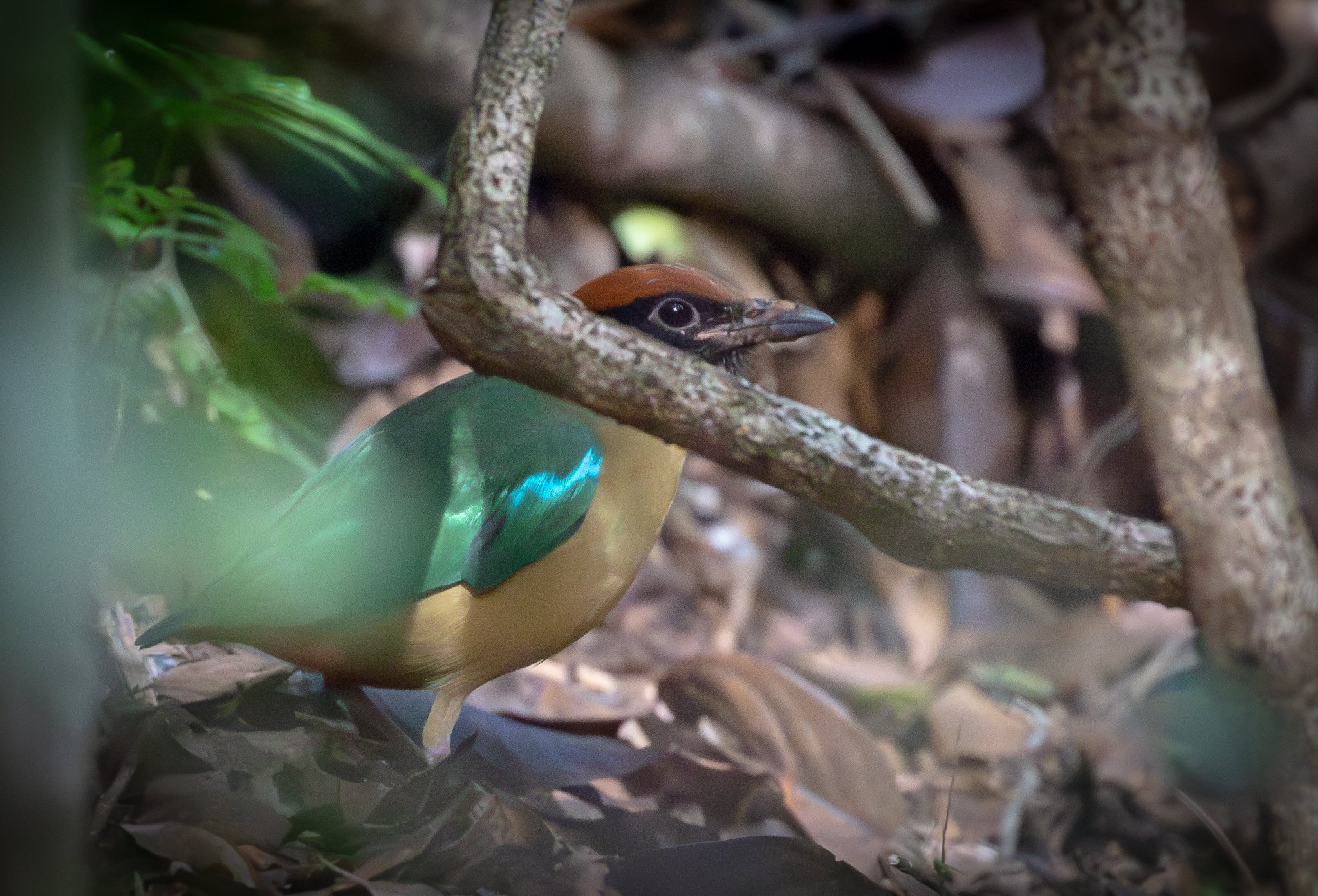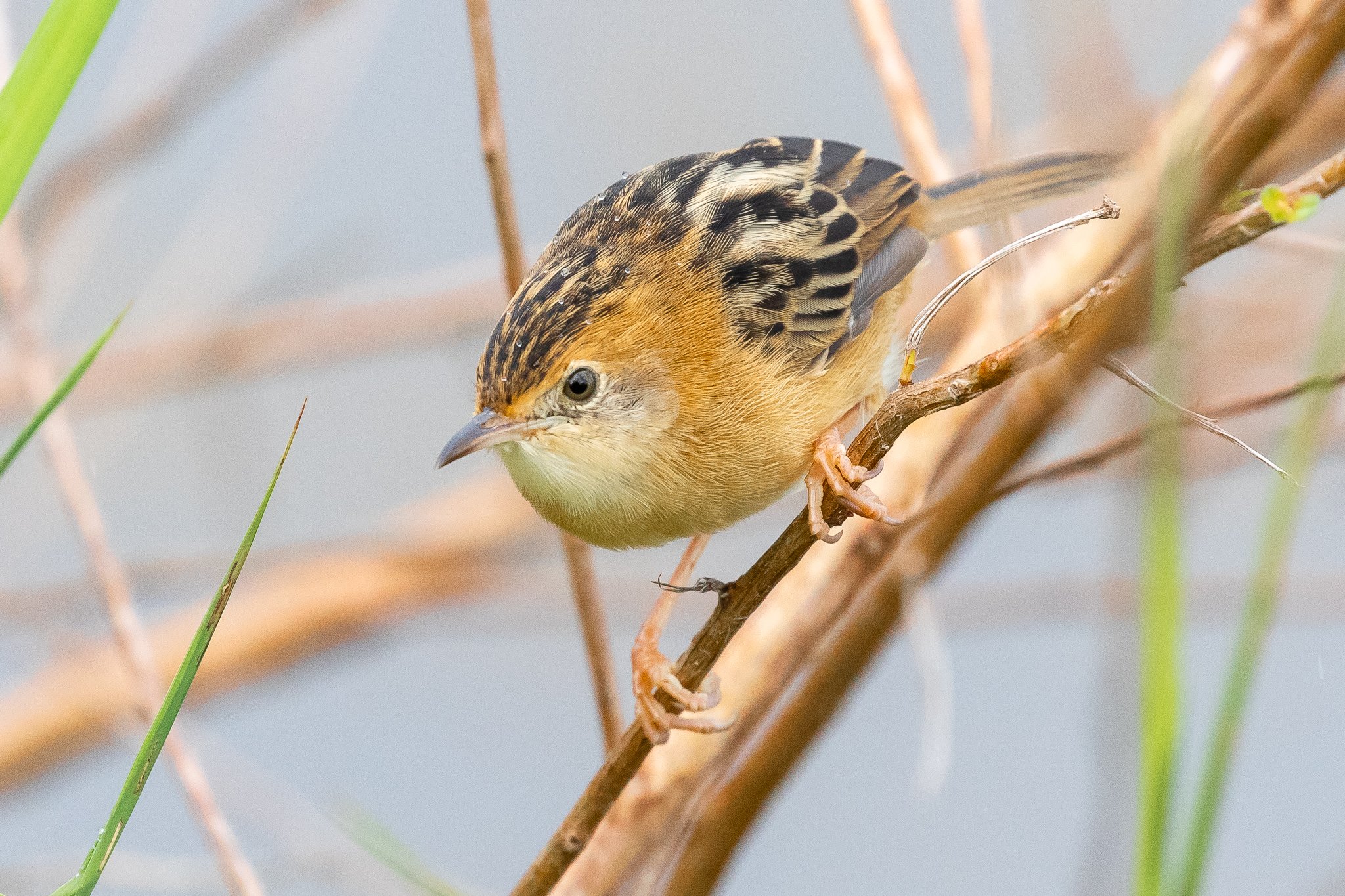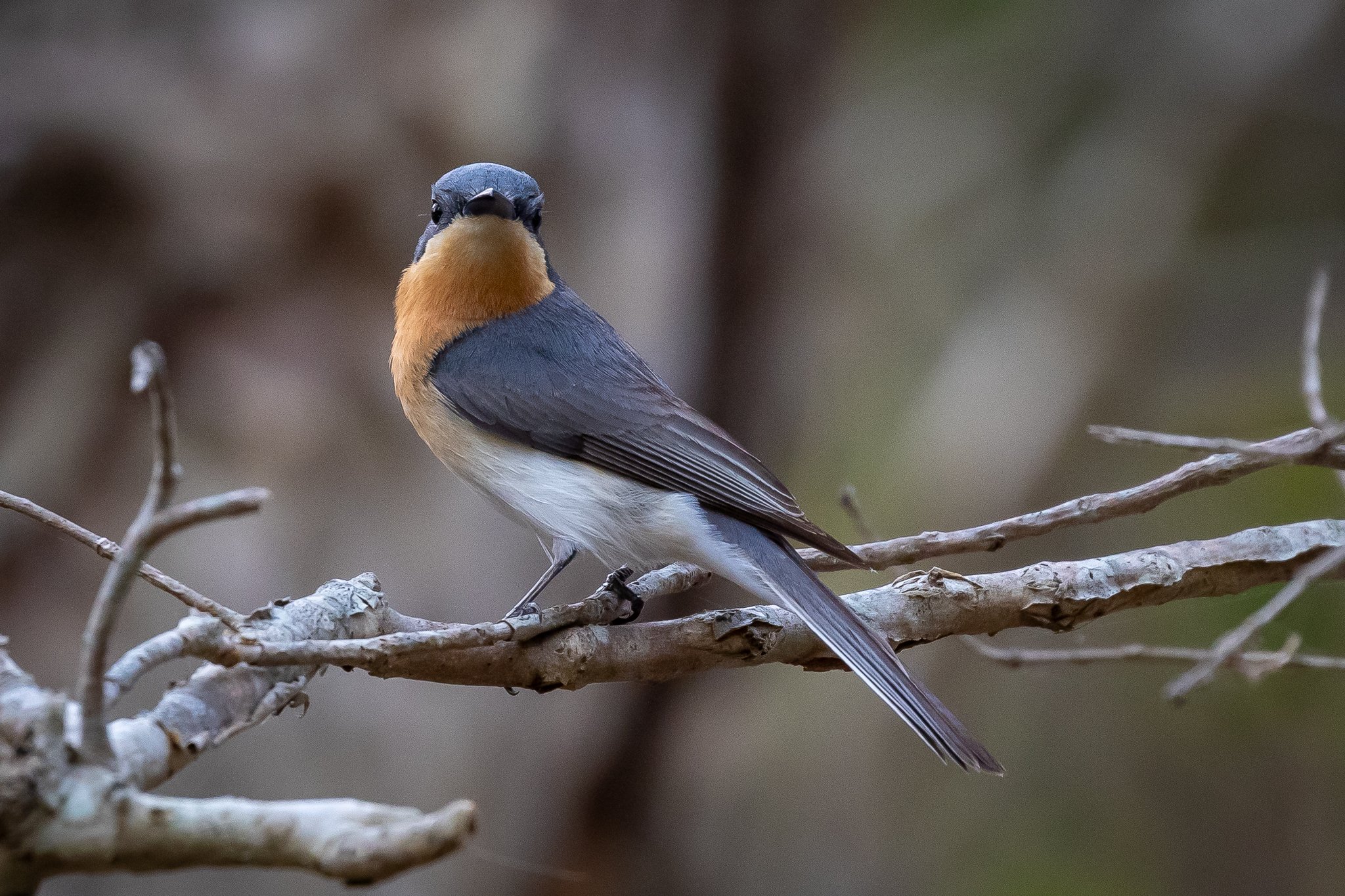Drive inland 30 minutes from Byron Bay township and you find yourself on winding roads through beautiful rainforest. This week’s Byron Bird Buddies survey was at another bush regeneration estate, reclaimed from land that had been cleared many years ago for dairying and growing bananas. The variety and quality of the new forest is impressive, the result of 30 plus years of toil. The estate abuts the Goonengerry national park and we were rewarded with the call of an Albert’s Lyrebird nearby.
Very difficult to spot, these two Tawny Frogmouths adopt a branch-like pose that enhances their camouflaged coats.
A shaft of sunlight shines on this meticulously crafted spider web.
The sun was also shining on this beautiful Rufous Fantail.
The Brown Cuckoo-Dove is often heard adding to the background serenade of the rainforest with its characteristic ‘oo-wupp” call.




































































































